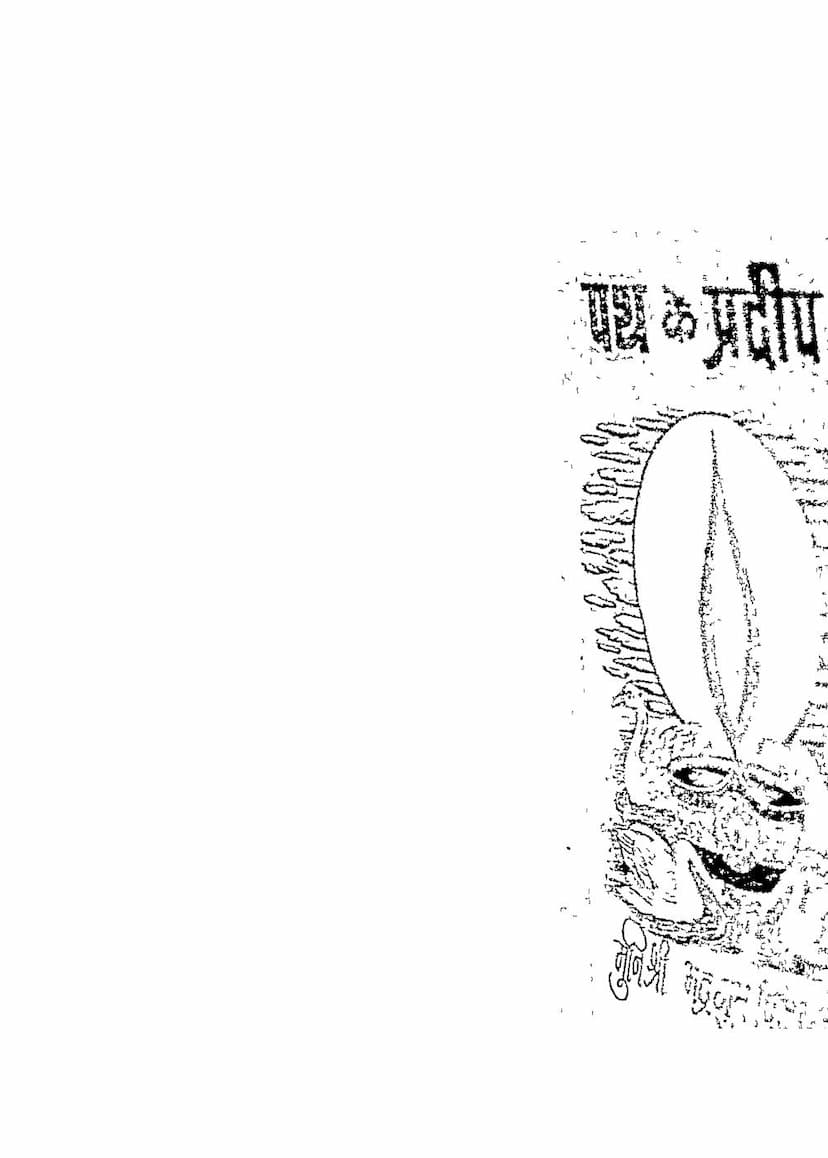Path Ke Pradip
Added to library: September 2, 2025

Summary
Here's a comprehensive summary of the Jain text "Path ke Pradip" by Muni Bhadraguptavijay, based on the provided pages:
Book Title: Path ke Pradip (Lamps of the Path) Author: Muni Bhadraguptavijay Publisher: Vishvakalyan Prakashan Trust, Mehsana
Overall Theme: "Path ke Pradip" translates to "Lamps of the Path," and the book serves as a guide, offering spiritual insights and practical advice for navigating life's journey. It aims to illuminate the path of righteousness and spiritual progress for the reader. The author, Muni Bhadraguptavijay, presents these teachings as his daily contemplations, soul's sensations, and studied reflections from scriptures.
Key Themes and Teachings:
The book is structured as a collection of short, aphoristic pronouncements (akin to "pradip" or lamps) that offer guidance on various aspects of spiritual and ethical living. Here are some of the prominent themes:
-
Self-Realization and Inner Purity:
- The importance of understanding one's own mind, its thoughts, desires, and emotions. The reader is encouraged to become the master of their mind, not its servant.
- Emphasis on purification, starting with the body, then extending to thoughts and speech.
- The core message is to seek inner purification and self-benefit (हित), which is defined as spiritual purity, rather than mere self-interest (स्वार्थ).
-
Spiritual Conduct and Ethics:
- Living a Dharmic Life: The necessity of religion for peace of mind. True peace is found only through Dharma.
- Overcoming Negative Emotions: Identifying anger, pride, deceit, and greed as the seeds of suffering. The book advises against dwelling on others' faults.
- The Nature of Happiness and Suffering: True happiness comes from filling others with joy, not from snatching it away. Suffering originates from within the soul, not from external circumstances.
- Mindfulness and Present Moment Living: Living in the present, finding contentment in what is received, and avoiding anxiety about the future.
- The Importance of Renunciation (Tyaga): Warning against getting drowned in worldly pleasures, suggesting instead to "take a dip" and move forward on the path of renunciation.
- Virtue and Character: The text stresses that true Dharma is not just in external rituals but in internal virtues like forgiveness, humility, simplicity, non-greed, non-violence, and truth. A virtuous person attracts others.
-
Spiritual Practice and Devotion:
- Faith in the Divine: Believing that whatever one has is a gift from the merciful divine, fostering love and reverence.
- The Power of Name and Devotion: Connecting with the divine through names and forms, and cultivating sincere love for the divine.
- The Role of Scriptures and Knowledge: Gaining knowledge from scriptures to dispel ignorance and illuminate the mind. However, mere scholarship is not enough; contemplation is key.
- The Path of Detachment: Understanding that attachment to worldly possessions and social status leads to bondage.
- The Importance of Inner Development: Emphasizing that inner development is crucial and can be achieved in any stage of life.
-
Facing Challenges and Adversity:
- Courage in the Face of Difficulties: Life's path is filled with thorns, but one should not be discouraged. Facing challenges with happiness and joy is encouraged.
- Suffering as a Teacher: Viewing suffering as a source of perspective and strength.
- Resilience: Not succumbing to difficulties but confronting them with courage.
-
Social and Relational Aspects:
- Compassion and Empathy: Showing compassion towards sinners rather than hatred, as hatred can lead to attraction towards sin.
- Understanding Others: Trying to understand others' minds and problems, and offering guidance with love.
- The Importance of Good Company (Satsang): Associating with knowledgeable and virtuous individuals.
- Avoiding Greed and Attachment: The burden of possessions weighs down the mind. Releasing the ego and "mine-ness" is essential for freedom.
- The Illusion of Worldly Pleasure: True happiness is not found in conveniences or the fulfillment of desires but in freedom from them.
-
The Nature of Wisdom and Ignorance:
- Distinguishing True Knowledge: True knowledge leads to the resolution of problems without creating new ones. Shallow knowledge can lead one astray.
- The Illusion of Desire: Desires, especially those that lead to dependence, should be approached with caution and introspection.
- The Value of Experience: True spiritual hunger leads to direct experience rather than mere discussion.
-
Guidance for Spiritual Seekers:
- Seek Guidance: If unable to study scriptures oneself, seek the company of those who have this knowledge.
- Perseverance: Life is short, and there is much to achieve; one should not sit idly.
- Action and Intention: One's actions should be guided by pure intentions.
- Faith and Action: Having faith in Dharma and its power, and surrendering to it.
Specific Examples and Analogies:
- The book uses the analogy of a "traffic police" who directs others to a destination, even if they themselves are not currently on that path, to explain the role of a spiritual guide.
- It refers to the story of King Bhadrabahu and the treasury that couldn't be filled by worldly means, symbolizing the insatiable nature of desire.
- The story of Mahamantri Pethadshah of Mandavgadh is highlighted as an inspiring example of devotion, selflessness, and adherence to vows, even in challenging circumstances.
- The analogy of a "blind person" and the sun's light illustrates that merely talking about spiritual truths is insufficient if the recipient lacks the capacity to perceive them; the focus should be on imparting the "sight" (knowledge or understanding).
Publisher's Note: The publication is presented as the first output of the fifth year of Vishvakalyan Prakashan's five-year plan for Hindi literature. It is mentioned as the 17th book published under this initiative.
In essence, "Path ke Pradip" is a collection of profound spiritual aphorisms designed to guide individuals towards inner peace, self-awareness, and the ultimate goal of spiritual liberation, drawing from the rich wisdom of Jainism.